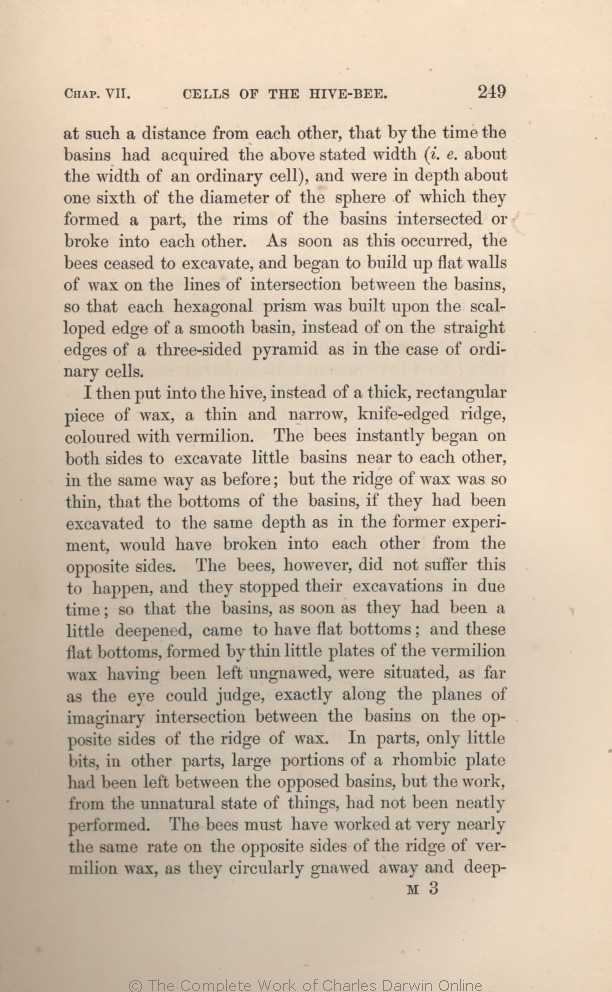at such a distance from each other, that by the time the basins had acquired the
above stated | above stated 1859 1860 1861 | | above-stated 1866 1869 1872 |
|
(
I. e.
1860 1861 |
|
(
i
.
e
.
1859 |
|
(
i.e
1866 |
|
(
i.e.
1869 1872 |
| one sixth of 1859 1860 1861 1866 1869 |
| one-sixth 1872 |
| the diameter 1859 1860 1861 1866 1869 | the diameter 1872 |
| sphere 1859 1860 1861 1866 1869 | | diameter 1872 |
| which they 1859 1860 1861 1866 1869 |
| the sphere of which they 1872 |
| scalloped 1860 1861 1866 1869 1872 | | festooned 1859 |
|
I then put into the hive, instead of a thick,
rectangular | rectangular 1861 1866 1869 1872 | | square 1859 1860 |
| experiment, 1859 1861 1866 1869 1872 | | experi- ment, 1860 |
| flat bottoms; 1859 1860 1861 1866 |
| bottoms with flat sides; 1869 |
| flat bases; 1872 |
| bottoms, 1859 1860 1861 1866 | | sides, 1869 | | bases, 1872 |
| thin little 1859 1860 1861 1866 1872 | | little thin 1869 |
| having been 1859 1860 1861 1866 | having been 1869 1872 |
| parts, only little bits, 1859 1860 1861 1866 |
| some parts, only small portions, 1869 1872 |
| had been 1859 1860 1861 1866 1869 | | were thus 1872 |
| on the opposite 1859 1860 1861 1866 |
| in circularly gnawing away and deepening the basins on both 1869 1872 |
| as they circularly gnawed away and deep- ened the basins on both sides, 1861 |
| as they circularly gnawed away and deepened the basins on both sides, 1859 1860 1866 |
| OMIT 1869 1872 |
|









